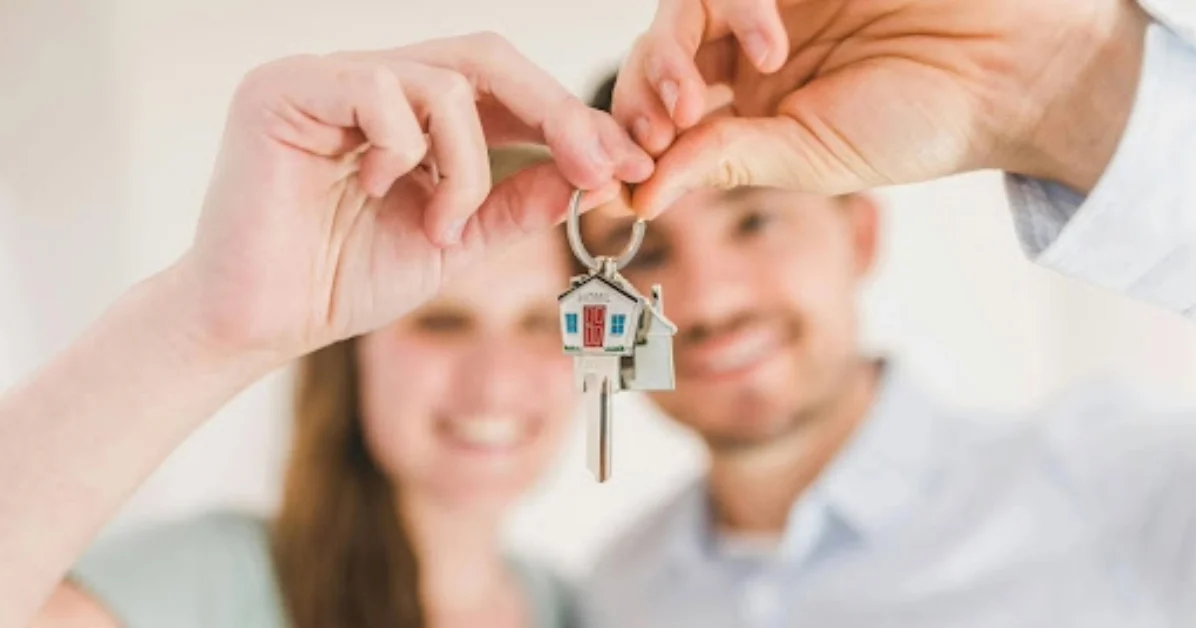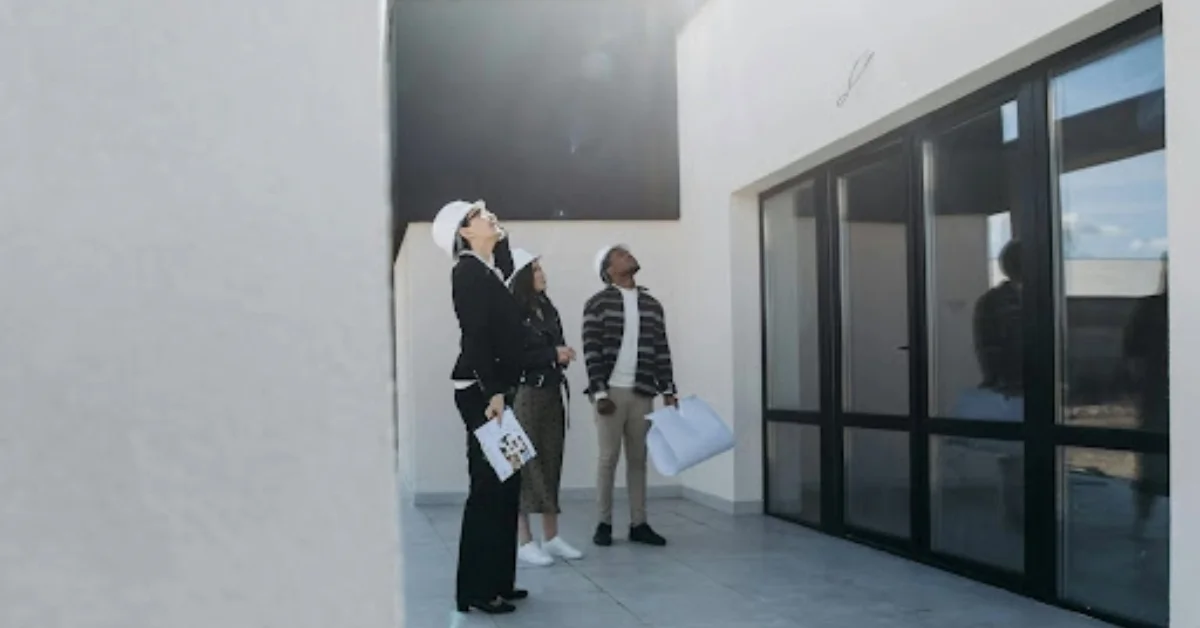Buying a property in Dubai is an exciting achievement. However, the journey doesn’t end when construction is complete, as the property handover is the final step. It is the point where ownership is officially transferred, keys are handed over, and you can finally move in. Understanding the process, fees, inspections and documents required for house handover in Dubai can save you time and money.
This guide will walk you through the Dubai house handover step by step, helping you navigate each stage with confidence and ease.
- What is property handover?
- Dubai house handover process
- Setting up utilities and moving in
- What you receive at handover
- Common issues and their resolutions
- Tips for a smooth handover
- Key takeaways
- FAQs

What is property handover?
Handover is the point when the developer transfers possession of the property to you. It goes beyond just receiving the keys. It is a structured process. Herein, you ensure:
- Your property meets the promised standards
- You have cleared all fees and payments
- Your ownership is registered with the Dubai Land Department (DLD)
Additionally, you will have to:
- Conduct inspections
- Settle any outstanding dues
- Sign the paperwork to become a rightful owner
Once all is done, you will receive access keys and cards, parking permits and the handover certificate or title deed. This is the final checkpoint. Once you have cleared this hurdle, you can sell, move in, or rent out your new property.
Dubai house handover process
The Dubai property handover usually follows five main stages:
- Completion notice: The developer notifies you that the project is complete.
- Property inspection (snagging): You check the property for defects or unfinished work.
- Handover notice and appointment: You meet the handover team and collect your property.
- Final payment and miscellaneous fees: All outstanding payments and administrative costs are settled.
- Ownership transfer at DLD: The title deed is issued, and utilities can be set up.
Each stage is accompanied by its own set of tasks and responsibilities. Let’s explore them in detail.
Step 1: Completion notice: What it is and what to do
The process begins when your developer issues a completion notice. This confirms that the developer has declared the project complete and registered it with the DLD. The notice includes your Property Index Number (PIN). You will need it for:
- Ejari registration
- Utility setup with the Dubai Electricity and Water Authority (DEWA)
Typically, you’ll have around 30 days after receiving the completion notice to complete the handover formalities, though this can vary by project.
If no notice is received, reach out to the developer. If they do not provide the notice, contact the DLD. Failing to respond to the notice or delaying action can result in penalties or complications.
What the completion notice does not mean
However, a completion notice doesn’t necessarily mean your unit is ready for occupation yet. Final inspections and occupancy approvals may still be in progress. It only signals that the project is complete on paper.
Step 2: The inspection (snagging): Protect your investment
The snagging inspection is one of the most essential steps in the handover process. While not legally mandatory, this inspection is highly recommended to protect your investment and ensure the property meets promised standards.
Thoroughly inspect the premises and assess any issues that require attention before accepting ownership. Focus on each aspect of your property, including:
- Doors, windows and locks
- Flooring
- HVAC (heating, ventilation and air conditioning)
- Electrical systems
- Plumbing and water systems
- Structural work
- Finishing
Snagging can uncover a wide range of issues across different systems and finishes, such as damaged flooring, loose railings, leaks in taps, uneven paint, defective lighting and more.
How to prepare
For this, you need:
- Sales and Purchase Agreement (SPA)
- Handover pack
- Snagging checklist
Allocate a few hours to conduct this inspection. While performing an inspection, carry along:
- A torch or a flashlight
- A phone or a camera to take pictures
- A notebook to take notes

Why get a professional snagging company on board?
Many buyers, especially overseas or new to property purchases, hire a professional snagging company. The inspectors employ high-tech equipment such as thermal imaging cameras to check for:
- Leaks
- Insulation gaps
- Electrical faults
Although this is an extra cost, the right inspection can save you thousands of dirhams in the future.
Documenting and reporting defects
Create a snag list with detailed notes and photos and submit it to the developer. Ask for a written timeline to finalise the requested repairs.
Developers should ideally repair defects before the final handover. So, do not sign acceptance documents until your concerns are acknowledged in writing.
Step 3: Property handover notice and appointment
Once snagging issues are addressed, your developer will issue a handover notice. This formally invites you to schedule your handover appointment. In this meeting, ownership documents are signed, keys are given, and you take possession of the unit.
What happens during the appointment
- You’ll sign the handover and clearance certificates
- You’ll receive your keys, access cards, and parking permits
- Your developer should provide warranties, appliance manuals, and other essential documents
Before signing, confirm that snagging has been completed or that a formal repair schedule is in place. Do not accept the property “as is” if defects are unresolved.
Step 4: Final payment: Clearing the last dues
Before the handover is complete, you’ll need to make the final payment. This typically includes any outstanding instalments of the purchase price, late fees, and miscellaneous charges. Besides, the details are outlined in the handover pack provided by the developer.
You should read this pack carefully and question any unclear charges. Do not make payments until all documentation and agreements are in place.
Typical components of the final payment
- Remaining instalments of the property price
- Late payment fines (if any)
- Oqood registration fees
- Title deed issuance charges
- Service charges (usually paid in advance)
- Utility registration deposits
- Developer’s admin or processing fees

Some developers may offer post-handover payment plans in Dubai for a portion of the remaining balance, but this must be clearly stated in your SPA or confirmed in writing before handover.
Step 5: Miscellaneous charges: What to expect
Beyond the property price, you’ll need to pay several one-off charges at handover. These vary by project but usually include:
Oqood registration
This is the DLD’s system for registering off-plan properties under the buyer’s name. It usually involves a small fixed administrative fee. Separately, when the property title is issued, a DLD registration fee applies, which is typically around 4% of the purchase price.
Title deed issuance
Title deed fees are generally AED 250 and an AED 20 knowledge fee, though some developers consolidate this into a slightly higher figure.
Note: Fees and deposits may vary depending on the project, developer, or updates to DLD and DEWA regulations. Always confirm the latest applicable amounts directly with the relevant authority or through your developer.
Service charges
These cover the cost of maintaining common areas and facilities. They’re usually charged per square foot and must often be paid in advance at handover.
DEWA and utilities
You’ll need to register with the DEWA. It requires a refundable deposit of:
- AED 2,000 for apartments
- AED 4,000 for villas
Additional small fees may apply for knowledge, innovation, and connection. District cooling providers and internet service providers may also require registration fees.
Step 6: Transfer of ownership at the DLD
The final legal step is to transfer ownership at the DLD. This is when you officially become the registered owner and receive your title deed.
Documents you’ll need
- Passport and Emirates ID (or for a representative, valid ID and Power of Attorney (POA))
- Original signed SPA
- Developer’s No Objection Certificate (NOC)
- Proof of all payments and fee receipts
The process
You’ll visit a DLD Customer Happiness Centre, submit the required documents, and pay the transfer fees. Once everything is processed, the title deed and property plan are issued via email. The physical title deed collection may take longer, depending on DLD scheduling. Keep both physical and digital copies safe.
Setting up utilities and moving in
With ownership transferred, you can now set up utilities and prepare to move in.
- DEWA: Apply online or via the DEWA app using your title deed or handover letter and your Property Index Number (PIN). Pay the required deposit and connection fee.
- District Cooling: Providers such as Empower or Emicool may require separate registration.
- Internet and TV: Register with approved providers once your unit is cleared for connections.
- Owner Association Rules: Check with building management before making any alterations or installations.
What you receive at handover
At a successful house handover, you receive:
- Handover/clearance certificate
- Completion certificate and occupancy approvals
- Keys, access cards, and parking permits
- Appliance warranties and manuals
- Title deed or proof of title deed application
- Payment clearance receipts
Common issues and their resolutions
- Snagging not done: Take documentation with you and escalate it to the developer’s management or RERA Dubai.
- Unexpected charges: Ask for itemised invoices and never pay unless you have absolute clarity.
- Title deed delays: Retain receipts of payment and bank transaction reference number. Follow up with the DLD persistently.
- Missing amenities: Refer to the SPA. Escalate if promises are not delivered.

Tips for a smooth handover
The house handover process can feel overwhelming, especially if it is your first home purchase in Dubai. A few smart practices can make it easier.
- Stay organised: Keep all your documents in a single folder, physical or digital.
- Set reminders: Track all important deadlines for notices, payments, and appointments. Missing deadlines may result in penalties.
- Double-check the fees: Always ask for a written fee breakdown. If you encounter any unfamiliar or additional charges, request clarification before paying.
- Have a confidante by your side: Having a friend, family member, or professional inspector accompany you during the snagging process can help.
- Do not rush the signing: Take your time during the appointment. Once you sign, you confirm acceptance. So, read everything, and then make the move.
By following these steps, you take charge and reduce the probability of errors.
Disclaimer: The property handover process, timelines, and fees can vary depending on the developer, project type, and updates from the DLD or other authorities. Buyers should always refer to their SPA and confirm details directly with the developer or a legal professional.
Key takeaways
Be mindful of your Dubai house handover procedure. Take swift action after receiving the completion notice. Snagging inspection is a must. Besides, you should hire a professional if needed. Request a detailed breakdown of the final fees and payments. Retain copies of every receipt and record. If you cannot attend the handover, use a notarised POA.
FAQs
It’s a unique identifier for your property that is needed for Ejari and utility registration.
You usually have 30 days, though timelines can vary by project.
Yes, you can through a notarised Power of Attorney (POA).
Yes, you have to, as most developments require advance payment of service charges at handover.
Processing may take a few days after submitting your documents, but you’ll usually receive the result by email.
Yes, provided your SPA and community rules allow it.